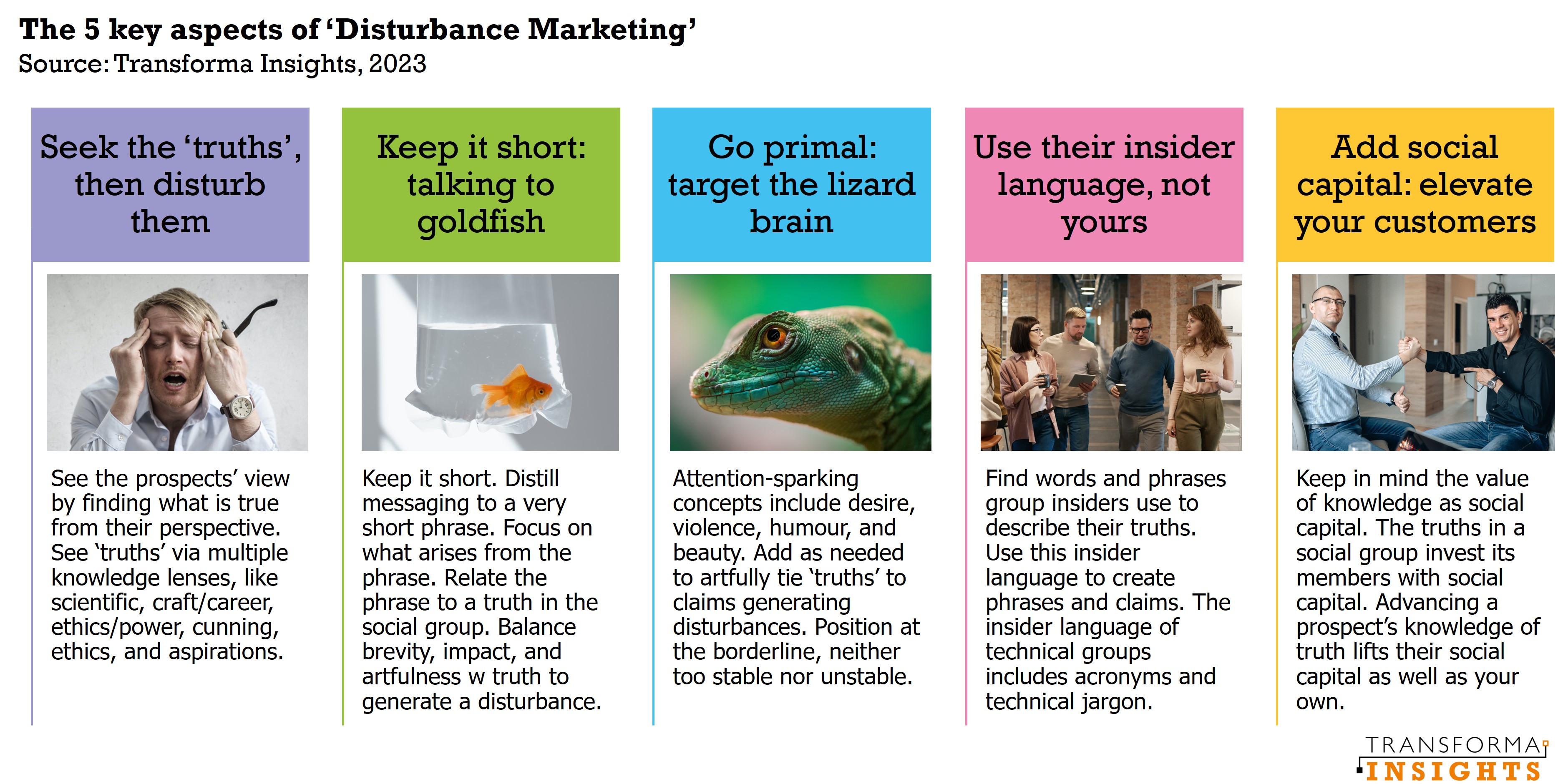‘Disturbance Marketing’ is a new approach proposed by Transforma Insights to promote technology products and services to professionals in technical fields. It identifies specific ‘truths’ that are understood by insiders within a field and then disturbs them through provocative messaging aimed at challenging prevailing wisdom. To be done effectively it involves messaging that comes from a credible source and with a relevant theme that originates from within the field to which it is addressed. It specifically excludes using approaches that are generic, and thus come from outside the field, such as ‘making things simple’ or ‘saving you $$$’. The aim is to attract attention to a product, of course. But that is also done in tandem with Disturbance Marketing’s aim to elevate the social capital of the customer by building their understanding of rapid technological and commercial developments; to do that it must tread a fine line between what grabs the attention and what is true. In this report, we first define what we mean by Disturbance Marketing and ground it in some discussions around wider ideas of ‘truth’, organisational intelligence, and disturbances, in a marketing context. We then examine the five steps in building a Disturbance Marketing message: seek truth then disturb it, keep it short, target primal instincts, use insider language, and build the customer’s social capital. Within that section, we also consider several real-world examples where Disturbance Marketing has been used effectively. The report then goes on to look at approaches that do and don’t work, including a critique of the generic and ‘outside’ language that tends to dominate technology marketing messages, before providing examples of how Disturbance Marketing approaches might be applied to new emergent technologies. Finally, we provide a 7-step approach for technology vendors to build their Disturbance Marketing messages.
‘Disturbance Marketing’ is a new approach proposed by Transforma Insights to promote technology products and services to professionals in technical fields. It identifies specific ‘truths’ that are understood by insiders within a field and then disturbs them through provocative messaging aimed at challenging prevailing wisdom. To be done effectively it involves messaging that comes from a credible source and with a relevant theme that originates from within the field to which it is addressed. It specifically excludes using approaches that are generic, and thus come from outside the field, such as ‘making things simple’ or ‘saving you $$$’. The aim is to attract attention to a product, of course. But that is also done in tandem with Disturbance Marketing’s aim to elevate the social capital of the customer by building their understanding of rapid technological and commercial developments; to do that it must tread a fine line between what grabs the attention and what is true.
In this report, we first define what we mean by Disturbance Marketing and ground it in some discussions around wider ideas of ‘truth’, organisational intelligence, and disturbances, in a marketing context. We then examine the five steps in building a Disturbance Marketing message: seek truth then disturb it, keep it short, target primal instincts, use insider language, and build the customer’s social capital. Within that section, we also consider several real-world examples where Disturbance Marketing has been used effectively.
The report then goes on to look at approaches that do and don’t work, including a critique of the generic and ‘outside’ language that tends to dominate technology marketing messages, before providing examples of how Disturbance Marketing approaches might be applied to new emergent technologies. Finally, we provide a 7-step approach for technology vendors to build their Disturbance Marketing messages.
